Modernizing, Managing, and Complying with Regulatory Advances in Science
Change, while scary, is a necessity. Opportunities for increased efficiency, higher profitability, and the ability for an organization to maintain a competitive advantage necessitate the need for change. Correctly adopting new liquid chromatography (LC) technology can be very challenging, however, when done correctly, modern LC technology can give a laboratory the ability to simplify method transfer across a diversity of analytical LC platforms at all of its facilities.
Photo Credit: Digital_Art/Shutterstock.com
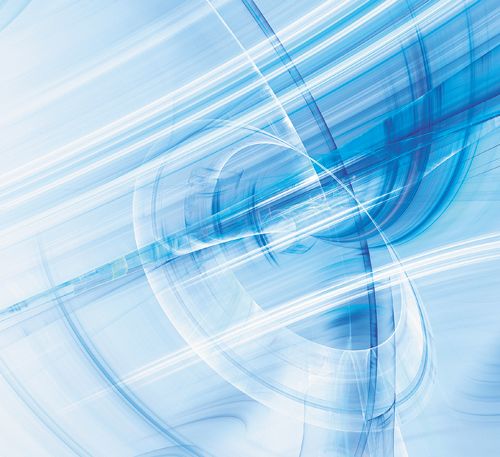
Viet Pham, Paula Hong, Thomas Swann, Jennifer Nguyen, and Patty McConville, Waters Corporation, Milford, Massachusetts, USA
Change, while scary, is a necessity. Opportunities for increased efficiency, higher profitability, and the ability for an organization to maintain a competitive advantage necessitate the need for change. Correctly adopting new liquid chromatography (LC) technology can be very challenging, however, when done correctly, modern LC technology can give a laboratory the ability to simplify method transfer across a diversity of analytical LC platforms at all of its facilities.
Chapter <621> and You
In effect since 1 August 2014 with USP 38 - NF 33 S2, the United States Pharmacopeia (USP) General Chapter <621> issued guidance for transferring methods from one LC system to another (1). The guidance prescribes how a scientist can modify an existing liquid chromatography (LC) method to meet system suitability requirements without the need to revalidate. Table 1 lists the allowed USP method changes.
Method Modernization
The Food and Drug Administration (FDA) has stated that over the life cycle of a drug product, new technologies could provide new information that would warrant an alternative analytical method. Thus, the FDA is encouraging organizations to periodically evaluate the analytical methods supporting drug products to assess whether it makes sense to convert older analytical methods to more modern ones. One of the simplest ways of modernizing a method with potentially no revalidation would be to update the column for an isocratic method. However, if that update involves changing the column to a fully porous from a solid-core particle column there are a few things to consider.
Fully Porous Particle
When modernizing a method to a new column technology, the USP has stated that any changes in the chemical characteristics, or “L” designation, of the stationary phase will be a modification of the method and require revalidation (1). However, there are a variety of other changes that can be performed to ensure the equivalent method meets system suitability requirements, without revalidation.
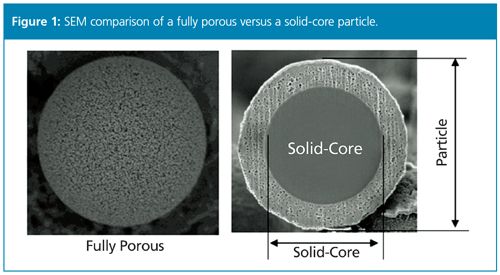
Under the revision, one is allowed to modernize a method by changing the inner diameter of the column to minimize column volume and solvent consumption. The USP guidelines permit such a change as long as the equivalent method maintains the same linear velocity as the original method. If column diameter, length, and particle size changes are made to isocratic methods, other aspects of Table 1 apply. The column length, L, and particle diameter, dp, in a proposed equivalent method, can preserve the L/dp ratio, relative to the original column used. The rational (2) for this “equivalent L/dp” guideline is that, for method modernization and transfer between columns with fully porous particles, the column efficiency, N, is proportional to the L/dp ratio (see equation 1).
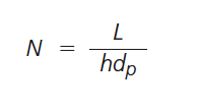
[1]
Specifically, the reduced plate height, h, is approximately constant when the original method and the equivalent method columns both have fully porous particles. Equivalent method efficiency is thus maintained The flow rates, plus column and particle diameters, mustalso be scaled using the equation in Table 1.
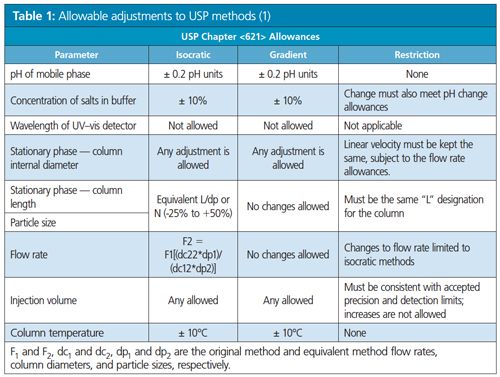
Solid-Core Particle
Scientists can also modernize an isocratic method when making changes to the column length or column particle size by comparing the column efficiency directly. This is typically done when making method transfers from a fully porous particle to a solid-core particle. The USP guidelines allow the use of solidâcore particles, but because of the differences between the physical properties of a fully porous versus a solid-core particle, the recommendation is to compare the columns based on efficiency, N (2).
When a solid-core particle replaces a fully porous particle, the efficiency of the column typically increases considerably (smaller h). In such cases, scientists should independently measure and calculate the plate count of each column to ensure equivalency for the analysis. To do this, it’s necessary to run the same sample on the original and replacement column (see equation 2).
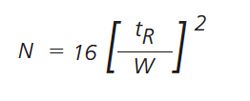
[2]
To meet the USP requirements these changes cannot be more than -25% to +50% of the original theoretical plates of the original column.
While the USP permits changes to an isocratic method to allow for modernization, it typically recommends making as few changes as possible, because multiple alterations can have a cumulative impact on the performance of the system (1). As with any change, the scientist should properly verify that there are no problems caused by change.
Method Transfer
Organizations should also examine current LC technologies when looking to transfer or modernize LC methods. Newer LC systems may be more efficient and generate higher quality data than legacy instrumentation. However, to ensure compatibility when evaluating or transferring an existing method to a modern instrument, certain variables should be taken into consideration. These variables include dwell volume and extracolumn volume, both of which can affect the chromatographic separation in different ways.
Dwell Volume: The dwell volume, or gradient delay volume, is the internal volume of the LC system between the device that controls the delivery of the gradient and the head of the column. The dwell volume therefore takes into account not only the internal volume of tubing, but also that of any valves or mixers in the fluid path leading up to the column. When transferring gradient methods, it is important to understand the dwell volume of each system, since the dwell volume creates a corresponding delay at the beginning of the programmed gradient. This gradient delay can have an immediate effect not only on peak retention times but also on selectivity, especially of early eluting compounds. Thus, it is important to understand the dwell volume of each LC system - the one the method is running on and the one the method is being transferred to (Figure 2).

Once the dwell volume is measured and quantified, the scientist may need to adjust the gradient to allow for the deviation from each system. USP <621> allows scientists to adjust the duration of an isocratic hold or the dwell volume to meet system suitability requirements (1). For example, when transferring from a high performance (HP)LC system with a larger dwell volume to one that has a smaller dwell volume, a longer isocratic hold can be added to the gradients to emulate the HPLC system. However, in cases where methods are being transferred from a system with a lower dwell volume (for example, from a UHPLC system to an HPLC system) it can be challenging to decrease the gradient delay of the largerâdwellâvolume system.
Systems with more than one fluid path allow scientists to adjust the dwell volume of the system by selecting the appropriate flow path, thus eliminating the need to make any physical changes to the system. The two flow paths include one that has a dwell volume comparable to most HPLC systems (1.1 mL) and another with a slightly lower dwell volume (0.760 mL) to accommodate newer 2-µm column technologies. An additional approach towards addressing these differences is to adjust the gradient start time relative to the injection, using software. The gradient start can then be adjusted in time or volume to emulate a system with lower or greater dwell volume.
Extracolumn Volume: LC system band broadening is a combination of both column and extracolumn effects. Extracolumn volume is defined as the volume from the head of the drawn sample to, and including, the volume of the detector flow cell. Column heaters and detectors can significantly influence the extracolumn values of an LC system, as do system components such as switching valves, pre-heater, or flow cells. Any additional component hardware inserted into the flow path between these two positions will add to the extracolumn volume and increase dispersion (band broadening).
The loss in separation efficiency because of extracolumn effects varies with column dimension and particle size. The results from columns with smaller internal volumes will be negatively affected more by extracolumn band broadening than results produced by HPLC (4.6 mm) columns. This is because the ratio of onâcolumn to extracolumn band broadening is low, meaning extracolumn effects contribute to a significant portion of the resulting overall band broadening (3).
Conclusion
As analytical technology continues to evolve and improve, and the value of modern analytical methods is better understood, the FDA is now advocating for updates to USP monographs (4). The need to modernize analytical methods allows the USP to continually improve the quality of the information on the standards that they provide to the industry.
With method modernization, it is important to take into account the differences between various columns and LC systems, and to make proper adjustments to account for these differences. When making any adjustments though, it is critical to understand the guidance provided by the USP in General Chapter <621> and follow it to minimize the amount of revalidation required.
References
- General Chapter <621> “Chromatography - System Suitability”, in United States Pharmacopeia 39–National Formulary 34 S1 (United States Pharmacopeial Convention, Rockville, Maryland, USA, 2011) http://www.uspnf.com/uspnf/pub/data/v39341/usp39nf34s1_c621.xml (accessed 11 October 2016).
- T. Swann and J. Nguyen, Waters Corporation, USP Method Modernization Using “Equivalent L/dp” and “Equivalent N” Allowed Changes with CORTECS C8 and CORTECS UPLC C8 Columns, Application Note, 11 April 2016: http://www.waters.com/webassets/cms/library/docs/720005666en.pdf
- P. Hong and P. McConville, Waters Corporation, Dwell Volume and Extra-Column Volume: What are They and How Do They Impact Method Transfer, Application Note, 6 October 2016: http://www.waters.com/webassets/cms/library/docs/720005723en.pdf
- http://www.usp.org/usp-nf/development-process/monograph-modernization/list
Viet Pham has been with Waters since 2000. Since joining Waters, he has held a multitude of roles, including Field Service Engineer, Application Chemist, and is currently a Senior Product Marketing Manager. Before joining Waters, he worked at a biotech company in South San Francisco in the analytical chemistry division. Viet gained his Juris Doctorate from Valparaiso University School of Law (Valparaiso, Indiana, USA) in 2010 and his B.S. in biochemistry from the University
of California, Davis (Davis, California, USA) in 1999.
Paula Hong is a Principal Scientist at Waters Corporation. She received her B.S. in chemistry from Bucknell University (Lewisburg, Pennsylvania, USA) and her Ph.D. in inorganic chemistry from The University of Pennsylvania (Philadelphia, Pennsylvania, USA). She began her career as an applications chemist at Waters Corporation over 10 years ago. Her work has focused on UHPLC and sub-2-µm technology for the application of both small and large molecule separations. She has authored numerous publications, including review articles, white papers, and application notes.
Thomas Swann is a Principal Scientist in the technology advancement group of Waters. His current responsibilities involve the development of column chromatography strategies and applications in the SFC and LC areas (both analytical and prep) for the pharmaceutical industry. Prior to joining Waters, he was a Senior Analytical Chemist in the Synthesis and Analysis Technology Team (SATT) of Bristol-Myers Squibb (BMS). His role at BMS included the development and use of analytical chemistry technology to analyze and purify singleton and library medicinal chemistry drug candidates. Tom holds a B.S. degree in chemistry from Dartmouth College (Hanover, New Hampshire, USA), a Ph.D. in chemistry from the University of Oregon (Eugene, Oregon, USA), and has postdoctoral experience in medicinal chemistry from SUNY-Buffalo (Buffalo, New York, USA).
Jennifer M. Nguyen joined Waters Corporation as a research scientist in 2015. Since joining Waters, she has worked on the evaluation and application of new column technologies. She was previously employed as a research and development engineer at Thermo Fisher Scientific for over 5 years where she developed new column consumables, applications, and packing and quality control processes. Her focus while there centred on discovering novel packing processes, evaluating modern solid-core and sub-2-µm particles, and developing new nanoflow and microflow columns and consumables. She gained her MA in chemistry from The Pennsylvania State University (State College, Pennsylvania, USA) in 2007.
Patty McConville is a Senior Manager in the systems effectiveness group at Waters.
E-mail: Viet_Pham@waters.com
Website: www.waters.com
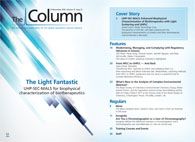
What Goes in a CDS IT Service Level Agreement?
Published: April 7th 2025 | Updated: April 7th 2025Protecting your network chromatography data system (CDS) data is critical and a service level agreement (SLA) with your IT provider is vital. What should be included? Are SLAs for in-house IT and SaaS (software as a service) similar?
Advanced LC–MS Analysis for PFAS Analysis in Eggs
October 11th 2024The European Commission's regulation on maximum levels for certain contaminants in food highlights the need for precise and reliable methods to quantify per- and polyfluoroalkyl substances (PFAS) in various food matrices. This article discusses development and validation of a robust method for analyzing 21 PFAS compounds in chicken eggs using solid-phase extraction (SPE) and liquid chromatography–mass spectrometry (LC–MS).





